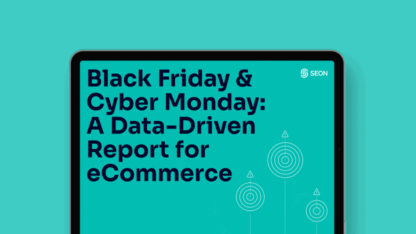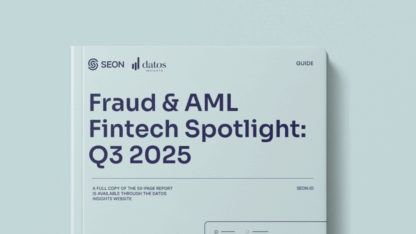Speed is both the industry’s superpower and its Achilles’ heel in payments. Transactions settle in seconds, leaving no room to unwind mistakes or recover losses. Fraudsters have evolved just as quickly, deploying synthetic identities that slip through onboarding, mule accounts that shuttle funds across borders and coordinated attacks that thrive on outdated defenses. Between 2023 and 2028, online payment fraud will cost businesses more than $362 billion, a reminder of just how high the stakes have become.
Fraud prevention has been treated as a back-office necessity for too long: reduce chargebacks, block bad actors, tick the compliance box. However, for scaling payments companies, that view is far too narrow. The data used to stop fraud can also help in making better product decisions. With the right risk signals, teams can optimize onboarding, strengthen customer trust and expand faster with less friction. Fraud prevention, once defined purely as defense, is becoming a driver of growth.
Why Current Tools Fall Short
Many providers are still fighting today’s threats with yesterday’s tools. Fraud prevention and AML often operate in silos, creating a fragmented view of risk where connections are easily missed. A mule account, for instance, might be flagged for suspicious transfers in one system while appearing perfectly clean in another.
Signal quality remains another major weakness. Too many legacy platforms still rely on resold or outdated datasets, leaving wide gaps for fast-moving attacks to slip through. The result is wasted effort: fraud teams chase false leads while genuine customers are left waiting (and becoming increasingly frustrated). The lack of transparency only makes matters worse. Blackbox models spit out decisions without context, forcing fraud and compliance teams to defend approvals and declines they can’t really fully explain. In a trust-driven industry, opacity is a risk in itself.
And the fallout is immediate: slower onboarding, higher false positives, wasted resources and lost agility in an environment where threats evolve by the hour. For companies trying to scale, these flaws are structural roadblocks to growth.
Beyond Defense: The Untapped Value of Risk Signals
If outdated tools build barriers, better signals clear the path. Risk data is no longer just about stopping fraud; when used strategically, it lays the foundation for more innovative products and faster growth.
Forward-looking teams already operate this way. Device and behavioral data streamlines onboarding, quickly separating trusted customers from high-risk profiles. Tiered trust models shape journeys to match risk level, letting low-risk users move freely while flagging accounts that demand closer scrutiny. Signals such as device fingerprints, phone history and geolocation add further context, allowing providers to personalize flows without undermining security.
The benefits extend beyond reducing fraud losses with fewer false positives keeping valuable customers engaged, leaner review queues that free teams from operational drag and with a trust grounded in data, payments providers can expand into new markets with confidence.
The Right Signals, The Right Decisions
The key to unlocking this value lies in the quality and breadth of data. First-party, real-time signals drawn from digital interactions deliver depth that static or resold datasets cannot match. Device intelligence exposes emulators or mismatched browser setups that point to fraudsters in disguise. Email and phone histories distinguish disposable accounts from long-established ones. Geolocation and velocity checks uncover impossible travel patterns. Behavioral analysis highlights unusual login attempts, while cross-border transaction mapping can reveal collusive merchants or illicit flows.
What makes these signals transformative is how they are used. Instead of being trapped in opaque models, they flow into transparent, customizable risk scoring frameworks. Fraud, compliance and product teams work from the same intelligence, tuning thresholds to match their strategies. A product manager might ease friction for trusted repeat customers, while compliance teams maintain an auditable trail of every decision. Approvals move faster, workflows scale smoothly and outcomes inspire confidence from regulators, partners and customers alike.
Fraud Data as a Growth Engine
When harnessed this way, risk signals stop being a defensive tool and become a strategic business asset. They allow payments leaders to accelerate approvals without eroding safety, reduce the burden of manual reviews and approach new markets with far greater confidence.
The shift is cultural as much as technological. A shared layer of intelligence means fraud, compliance and product teams no longer pull in different directions. Instead, they work from the same foundation of data, which closes blind spots and speeds up decision-making. Compliance gains transparency, fraud teams increase their impact and product managers can design customer journeys that feel seamless rather than risky.
This collaboration can catalyze growth in an industry measured by speed and scale. Companies that continue to treat fraud prevention as a back-office cost will be left behind. Those who recognize risk signals as catalysts for innovation, expansion and efficiency will define the future of payments.
SEON helps payments companies unify fraud prevention and AML with 900+ first-party, real-time signals, giving you faster approvals, clearer decisions and the confidence to scale.
Speak with an Expert









